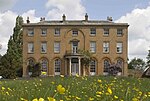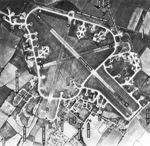Shepherd's Close
Wildlife Trust for Bedfordshire, Cambridgeshire and Northamptonshire reserves

Shepherd's Close is a 1.2-hectare (3.0-acre) nature reserve south of Spaldwick in Cambridgeshire. It is managed by the Wildlife Trust for Bedfordshire, Cambridgeshire and Northamptonshire.This small wood was planted in 1984 with ash, field maple and oak. Birds include blackcaps and chiffchaffs, and there are peacock, orange-tip and speckled wood butterflies.There is access from Stonely Road.
Excerpt from the Wikipedia article Shepherd's Close (License: CC BY-SA 3.0, Authors, Images).Shepherd's Close
Easton Road, Huntingdonshire Easton
Geographical coordinates (GPS) Address Website External links Nearby Places Show on map
Geographical coordinates (GPS)
| Latitude | Longitude |
|---|---|
| N 52.323 ° | E -0.339 ° |
Address
Shepherds Close
Easton Road
PE28 0TS Huntingdonshire, Easton
England, United Kingdom
Open on Google Maps









